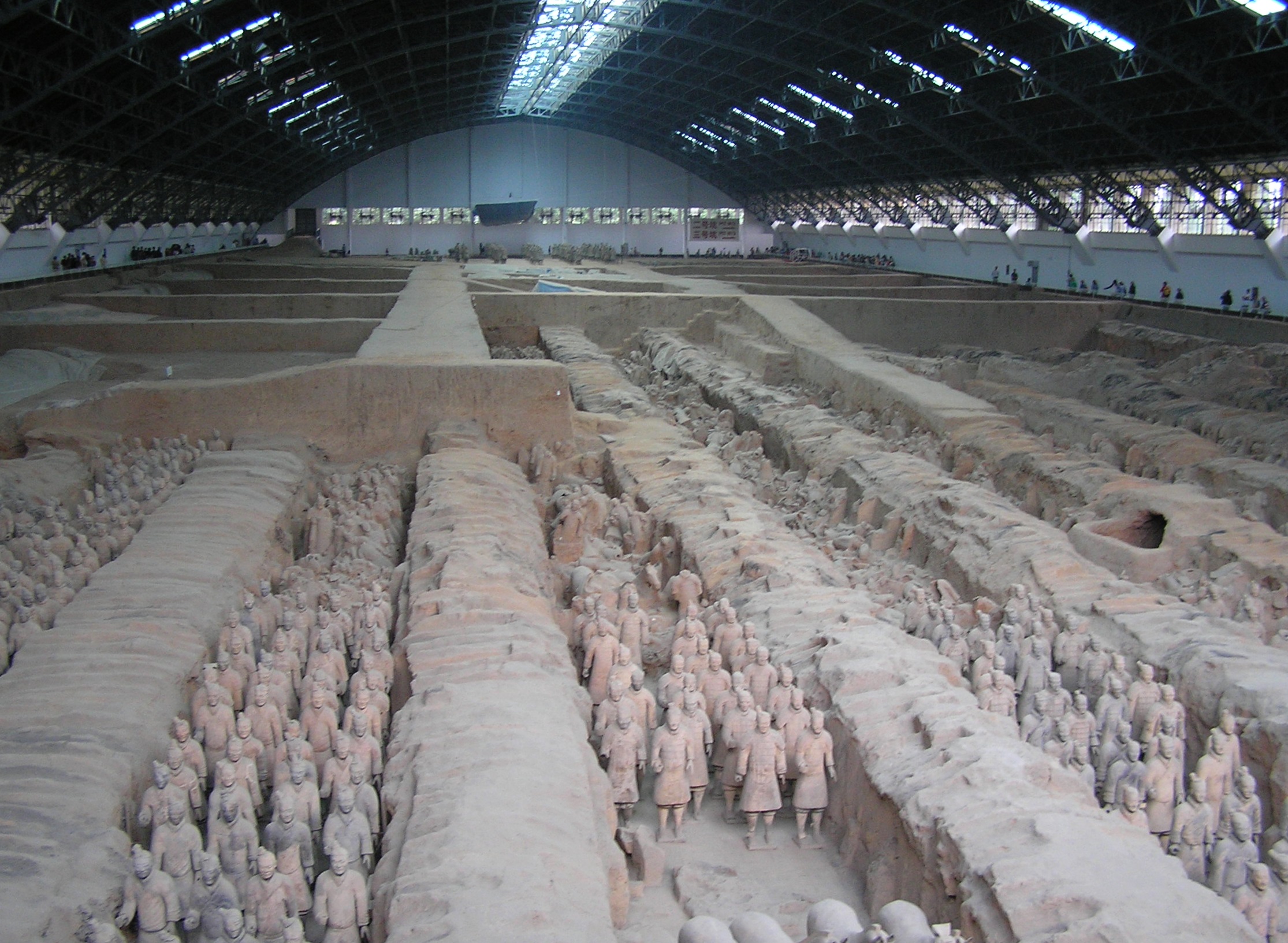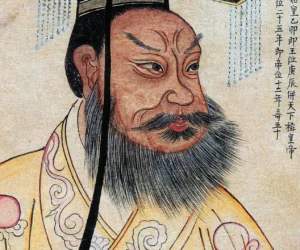Early Life and Rise to Power Qin Shi Huang was born in February 259 BC in Handan, the capital of Zhao. His birth name was Ying Zheng or Zhao Zheng. His father, King Zhuangxiang of Qin, and his mother, Lady Zhao, played pivotal roles in his early life. The influential merchant Lü Buwei helped him…
Qin Dynasty
The Qin Dynasty, marking a pivotal era in Chinese history, reigned from 221 to 206 BC. It was the first dynasty to unify China, laying the foundation for over two millennia of imperial rule. The dynasty emerged from the tumultuous Warring States period, a time of intense conflict and rivalry among the various states vying for supremacy. Under the leadership of Qin Shi Huang, the state of Qin emerged victorious, unifying the Chinese territories through conquest and consolidation.
Qin Shi Huang, the first emperor of the Qin Dynasty, is a figure of monumental historical significance. His reign, beginning in 221 BC, was characterized by radical reforms aimed at consolidating his power and unifying the nation. He standardized weights, measures, and even the script, which was crucial for administration and communication across the vast empire. Moreover, Qin Shi Huang is renowned for initiating the construction of the Great Wall of China, a monumental defense against nomadic invasions from the north.
The legalist philosophy, which advocated for strict laws and harsh punishments, underpinned the governance of the Qin Dynasty. This approach facilitated the centralization of power and the establishment of a highly efficient, though oppressive, bureaucratic state. The legalist policies, while effective in unifying China, also led to widespread resentment among the populace.
Religion during the Qin Dynasty was characterized by a mix of ancestral worship and reverence for natural and mythological deities, common in ancient Chinese belief systems. However, Qin Shi Huang’s reign saw a suppression of philosophies and teachings that challenged his authority, most notably Confucianism. This suppression included the infamous burning of books and burying of scholars, aimed at eradicating opposition to the legalist ideology.
Social and daily life in the Qin Dynasty was marked by the central government’s heavy hand. The populace was subject to labor conscription for massive state projects like the Great Wall and the emperor’s mausoleum, which houses the famous Terracotta Army. These projects, while showcasing the dynasty’s might and technological advancement, exacted a heavy toll on the common people.
The Qin Dynasty, despite its short duration, was marked by significant military campaigns. These included not only the wars of unification but also campaigns against the Xiongnu in the north and expeditions to the south, expanding the empire’s boundaries. The military prowess of the Qin, supported by advancements in weaponry and tactics, was a key factor in its successes.
The fall of the Qin Dynasty was as rapid as its rise. Following the death of Qin Shi Huang in 210 BC, internal strife and rebellion quickly engulfed the empire. The harsh legalist policies and the heavy burden of labor conscription fueled widespread discontent. In 206 BC, Liu Bang, who would go on to found the Han Dynasty, successfully overthrew the Qin, marking the end of its rule.
The Qin Dynasty, though brief, left an indelible mark on Chinese history. Its achievements in statecraft, military conquests, and monumental constructions like the Great Wall and the Terracotta Army underscore its legacy. The dynasty’s efforts to unify China under a centralized imperial rule set the stage for the country’s future development, making it a cornerstone of Chinese civilization.

Mausoleum of the First Qin Emperor
The Mausoleum of the First Qin Emperor is an ancient architectural marvel and burial complex in China. It is most famous for the Terracotta Army, a collection of terracotta sculptures depicting the armies of Qin Shi Huang, the first Emperor of China. The site spans an area of over 56 square kilometers and is a testament to the emperor’s power and the capabilities of ancient Chinese engineering. Constructed between 246 and 208 BC, the mausoleum remained hidden for more than two millennia until its discovery in 1974 by local farmers. It has since become one of the most significant archaeological finds of the 20th century and a UNESCO World Heritage Site.

